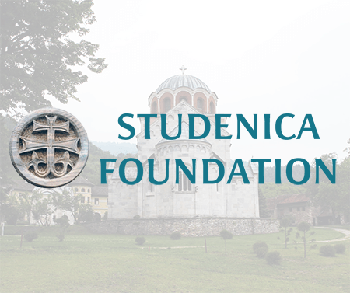HIGHLIGHTS
The best of Manasija in a short presentation.

The monastery of Manasija, also known by the name of Resava, is an endowment of Despot Stefan Lazarevic, the son of Prince Lazar and Princess Milica. He wished to build his mausoleum during his lifetime, and the work on the foundation of the monastery began in 1407. The great fortification walls with towers for which it is known, the monumental church of the Holy Trinity, refectory, monastic cells, perhaps even the residence of the despot, were finished in 1418. Despot endowed the monastery with land, vineyards, precious icons, liturgical vessels, books, and brought well-educated monks to live there. The monastery developed into an important cultural center, owing to Despot’s efforts and the literary and scriptorial activities of its brotherhood. In 1427, despot Stefan died and as his biographer, Constantine the Philosopher relayed, he was laid to rest in the church of Holy Trinity in the monastery he founded.
Collection of fresco paintings, ornaments, and architectural pictures.
360° virtual reality movies of Monastery Manasija church.
Second half of the 15th century, 222 pages.
A letter of testimony about suffering and sacrifice in the First World War.
In 2006, during archaeological excavations, the tomb with the remains of despot was discovered in the southwestern part of the church. The monastery suffered greatly in the following years: from the chronicles, we learn that there was a great fire in 1456, and in 1458 it was taken over by the Turks, who used it as a defense post. From the beginning of the 18th century, the monastery was within the confines of Austrian territories, and from that time the restoration work began, first on the church narthex which was demolished in a gunpowder explosion during the Turkish occupation. While throughout the 19th century, different restorations were undertaken, most systematic work had been done from the middle of the 20th century. Fortification walls were repaired, as well as the highest of the towers- the Despot’s tower. They are one of the most recognizable features of the Manasija monastery. There were additional lower defense walls, as well as a moat surrounding them.
The church of the Holy Trinity holds a central place within the monastic complex. It belongs to the Morava style of medieval Serbian architecture and it repeats some of the elements from the earlier churches of Ravanica and Ljubostinja. In the interior, only a third of the original fresco painting has been preserved. As we learn from Constantine the Philosopher, Despot Stefan brought “the most experienced painters” to execute them. Although we are deprived of any additional information, they were certainly very skilled, as is revealed by their fine draughtsmanship and Classical proportions of the figures depicted.


